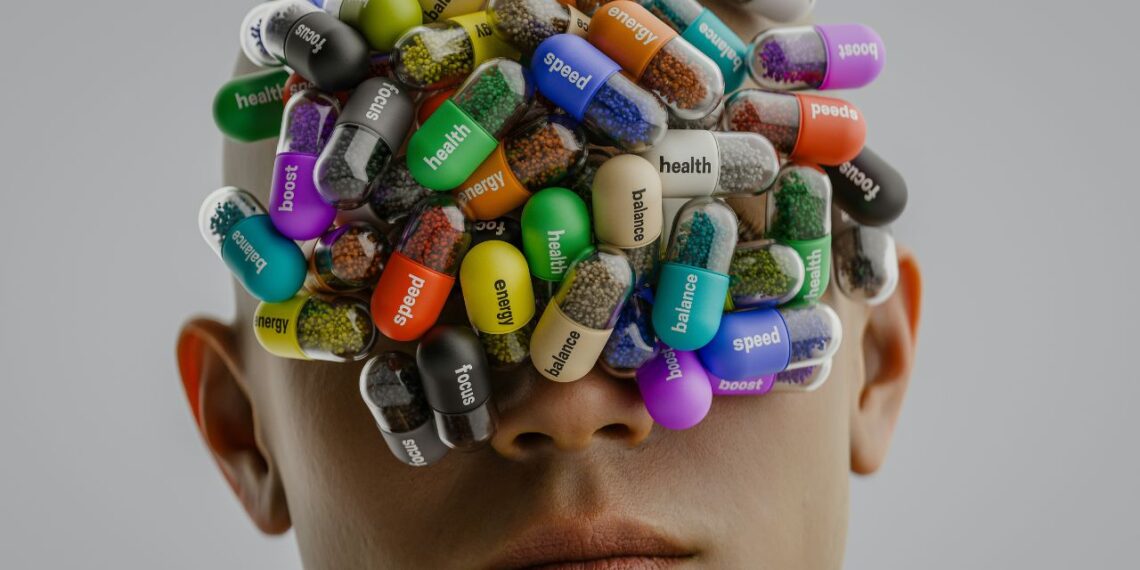- Dopamine, a neurotransmitter linked to motivation and mood, plays a key role in driving productivity and creativity in coworking spaces.
- Elements like natural light, color choices, and sound management influence dopamine production, affecting focus and well-being.
- A well-designed coworking space supports both individual work and social interaction, fostering a thriving, motivated community.
Focus is a rare commodity these days. People are bombarded with distractions, and the traditional office setup often just adds to the noise. They’re looking for something different, a place where they can actually get things done, feel inspired, and connect with others.
That’s where you come in. Coworking operators are not just providing desks and internet; you’re curating an experience. And increasingly, that experience needs to be designed with the human brain in mind.
We’re talking about understanding the science behind motivation and focus — how things like light, sound, and even the layout of the space can impact productivity and well-being.
It’s time to explore the concept of “dopamine design” and how you, as a coworking operator, can leverage these principles to create a space that not only attracts members but empowers them to thrive.
The goal of this is about creating a community where people feel good, do their best work, and keep coming back for more.
“Dopamine is a neurotransmitter made in your brain. It plays a role as a ‘reward center’ and in many body functions, including memory, movement, motivation, mood, attention and more,” according to Cleveland Clinic.
The Science of Dopamine and Productivity
Dopamine is a neurotransmitter often simplified as the “feel-good” chemical, but it’s much more nuanced than that. While it is involved in pleasure and reward, its real power lies in motivation and drive.
Dopamine is what pushes us to seek out new experiences, tackle challenges, and achieve our goals. It’s the engine behind productivity.
Now, there are some common misconceptions. Dopamine isn’t just about fleeting highs; it’s about sustained motivation. It’s not about instant gratification; it’s about the anticipation and reward of a job well done. And it’s not something you can simply “hack” with a quick fix.
Instead, it’s deeply connected to our environment. As coworking space operators, you have a unique opportunity to influence that environment and, in turn, your members’ dopamine production.
Here’s how environmental factors play a role:
Light
Natural light is a major dopamine booster. It regulates our circadian rhythms, improves mood, and increases alertness. Think about maximizing natural light in your space. Skylights, and even strategically placed mirrors can make a big difference.
Example: Instead of fluorescent overhead lighting, consider incorporating large windows and supplementing with warm, adjustable LED lights.
Color
Different colors can evoke different emotional responses. Blues and greens are often associated with calmness and focus, while yellows and oranges can stimulate creativity.
Example: Use calming blues in focused work zones and pops of yellow in collaborative areas.
Sound
A noisy environment can be a major productivity killer. Excessive background chatter or distracting noises can hinder focus and increase stress. Conversely, strategically curated sound can be incredibly beneficial.
Example: Offer quiet zones for deep work, and consider incorporating ambient sound or white noise in other areas to mask distracting conversations. Some coworking spaces even offer curated playlists designed for focus.
Layout
The way your space is organized has a huge impact on how people feel and interact. A cluttered or confusing layout can lead to stress and overwhelm, while a well-defined and organized space promotes clarity and focus.
Example: Create clear pathways, designate distinct zones for different activities (focused work, collaboration, relaxation), and ensure that everything has its place. Consider offering a variety of work settings — standing desks, comfortable lounge areas, private booths — to cater to different preferences and work styles.
Finally, let’s connect this to creativity and the “flow state.” Dopamine plays a crucial role in achieving flow.
When we’re engaged in a challenging but achievable task, dopamine is released, fueling our focus and motivation. By carefully designing your coworking space with the principles above in mind, you can create an environment that supports this sense of flow, helping your members unlock their creative potential and achieve peak productivity.
Key Elements of a Dopamine-Boosting Coworking Space
There are also practical elements you can implement in your coworking space to create a dopamine-boosting environment:
1.Natural Light
Sunlight is essential. It regulates circadian rhythms, boosts vitamin D production, and elevates mood. Seasonal Affective Disorder (SAD) studies highlight the impact of limited sunlight on well-being.
Actionable Steps: Maximize natural light with design elements like glass partitions. Consider the placement of workstations to optimize access to daylight. Minimize the use of heavy curtains or blinds.
2.Biophilic Design
Bring the outdoors in. Incorporate natural elements like plants, green walls, and even water features. Research shows that connecting with nature reduces stress, improves cognitive function, and enhances creativity.
“Mental health outcomes where individuals engaged with natural outdoor environments improved across 98% of studies, while physical and cognitive health outcomes showed improvement across 83% and 75% of studies, respectively,” according to the National Library of Medicine.
Actionable Steps: Add potted plants throughout the space. Create a green wall or vertical garden. Consider incorporating natural materials like wood and stone in the design.
3.Sound and Acoustics
Noise is the enemy of focus. Consider the acoustics of your space to enhance concentration and minimize distractions.
Actionable Steps: Implement soundproofing measures to minimize noise transfer between zones. Offer quiet zones for focused work. Consider using white noise machines or specific playlists in common areas.
4.Ergonomics and Comfort
Physical well-being is directly linked to mental clarity. Comfortable chairs, adjustable desks, and good posture are essential for sustained focus and preventing physical discomfort.
Actionable Steps: Invest in ergonomic chairs and adjustable desks. Provide a variety of seating options to cater to different preferences. Encourage regular breaks and movement.
5.Community and Social Interaction
Coworking is about community, but it’s also about focused work. Strike a balance between social interaction and individual work.
Actionable Steps: Designate social areas for networking and collaboration. Offer quiet zones or private booths for focused work. Create opportunities for social interaction through events and activities, but also respect the need for quiet and concentration.
6.Sense of Order and Cleanliness
A tidy and organized workspace reduces stress and promotes focus. A clean and clutter-free environment has a positive psychological impact.
Actionable Steps: Implement a regular cleaning schedule. Provide ample storage space to keep things organized. Encourage members to maintain a tidy workspace. Consider using visual cues, like signage, to help people navigate the space and keep it organized
The Future of Work and Dopamine Design
Creating environments that support focus and motivation is now a necessity as work is increasingly defined by distractions and digital overload. Dopamine design principles can transform coworking spaces into hubs of productivity, creativity, and well-being.
As a coworking operator, you’re at the forefront of this evolution. By prioritizing dopamine design, you’re not just offering a place to work; you’re creating a competitive edge. You’re creating a community where people feel supported, inspired, and empowered to do their best work. You’re building a space where people want to be.
The future of work is about understanding human needs and creating spaces that nurture them. Imagine coworking spaces that adapt to individual preferences in real-time, adjusting lighting, temperature, and even soundscapes based on user feedback.
Picture spaces that incorporate biofeedback technology to optimize focus and reduce stress. The possibilities are endless.
So, take a fresh look at your space. Consider how you can incorporate these principles of dopamine design. Whether you’re redesigning your entire space or making small tweaks, every step you take towards creating a more human-centered environment will make a difference. Your members — and your bottom line — will thank you for it.


 Dr. Gleb Tsipursky – The Office Whisperer
Dr. Gleb Tsipursky – The Office Whisperer Nirit Cohen – WorkFutures
Nirit Cohen – WorkFutures Angela Howard – Culture Expert
Angela Howard – Culture Expert Drew Jones – Design & Innovation
Drew Jones – Design & Innovation Jonathan Price – CRE & Flex Expert
Jonathan Price – CRE & Flex Expert













